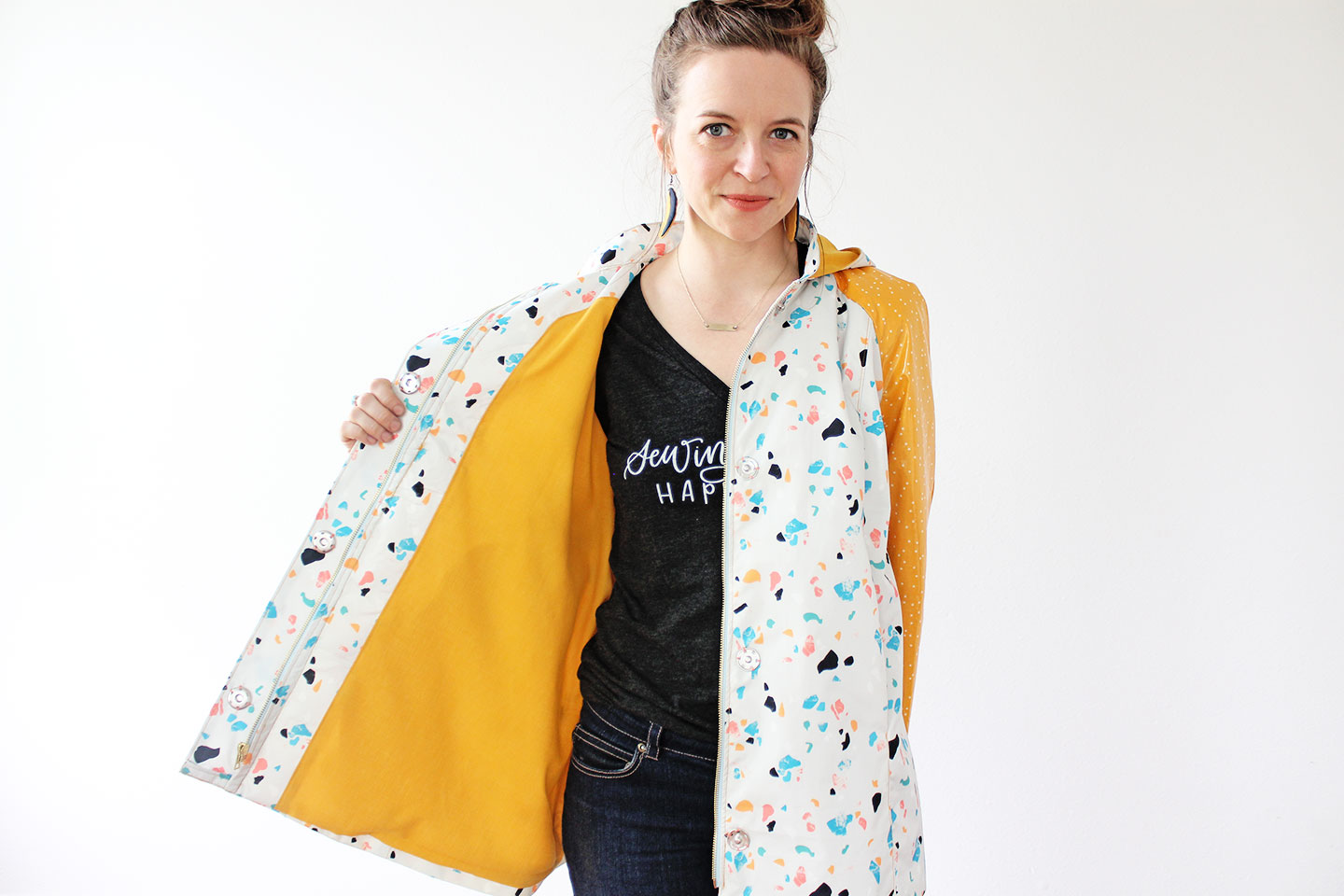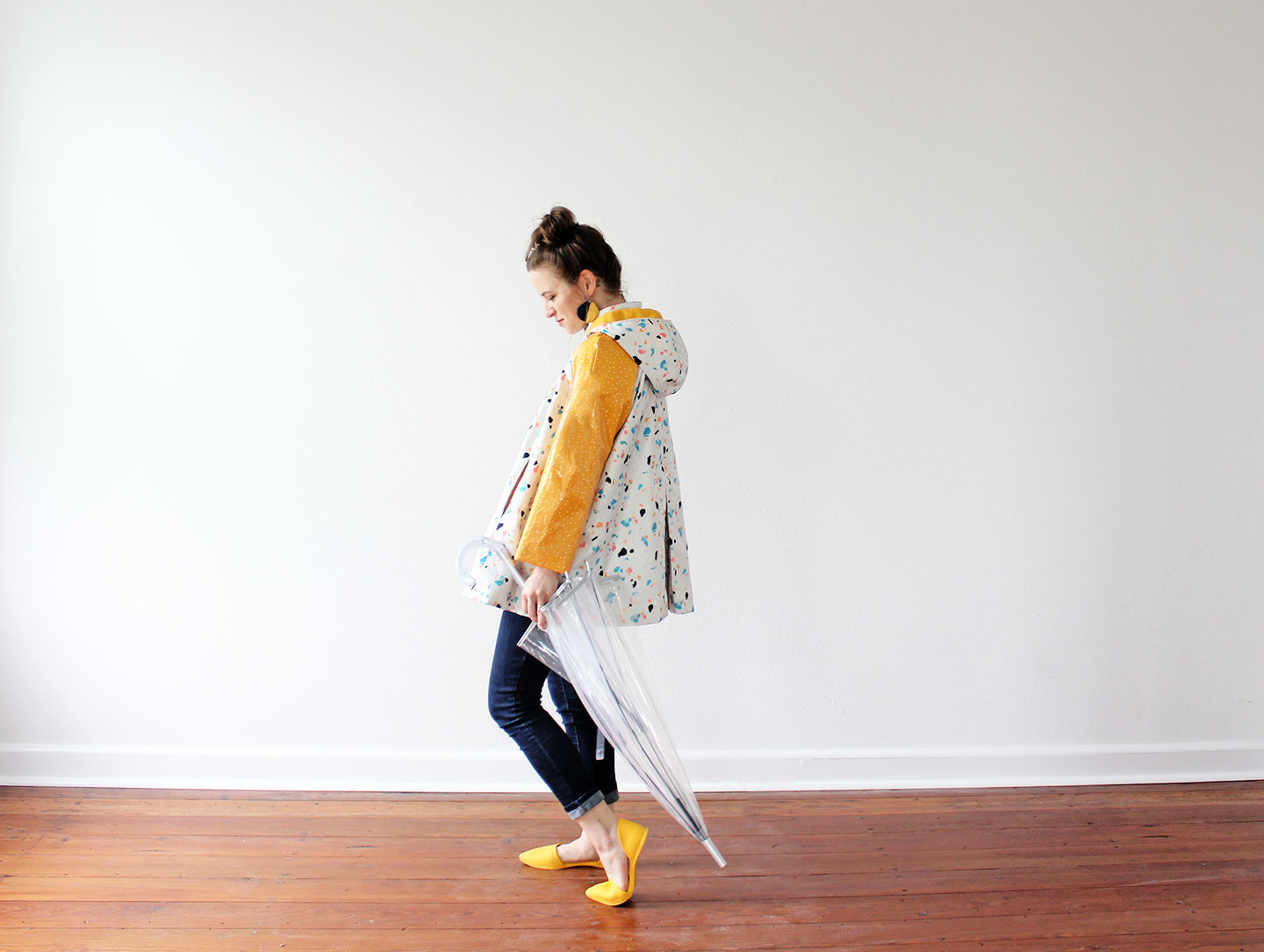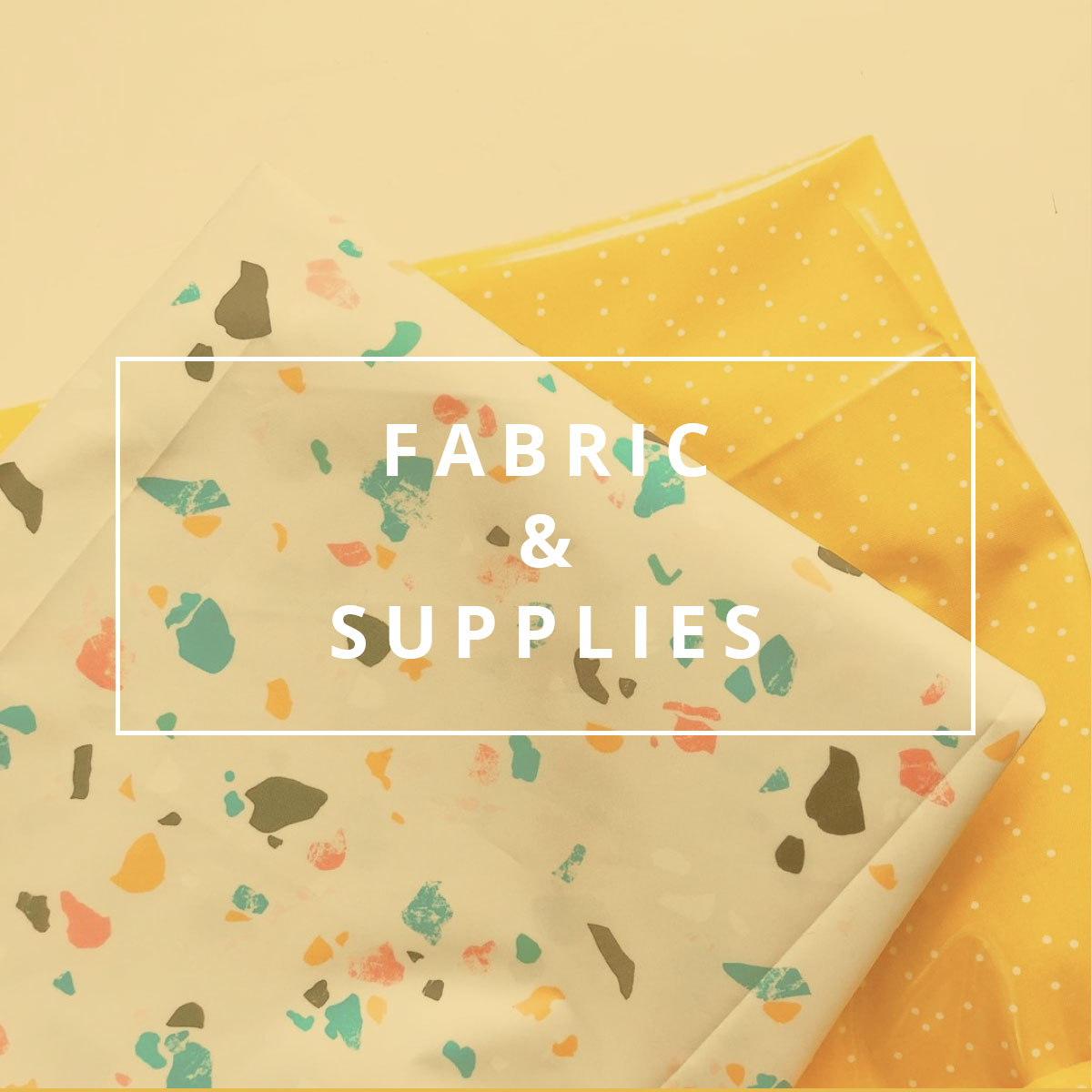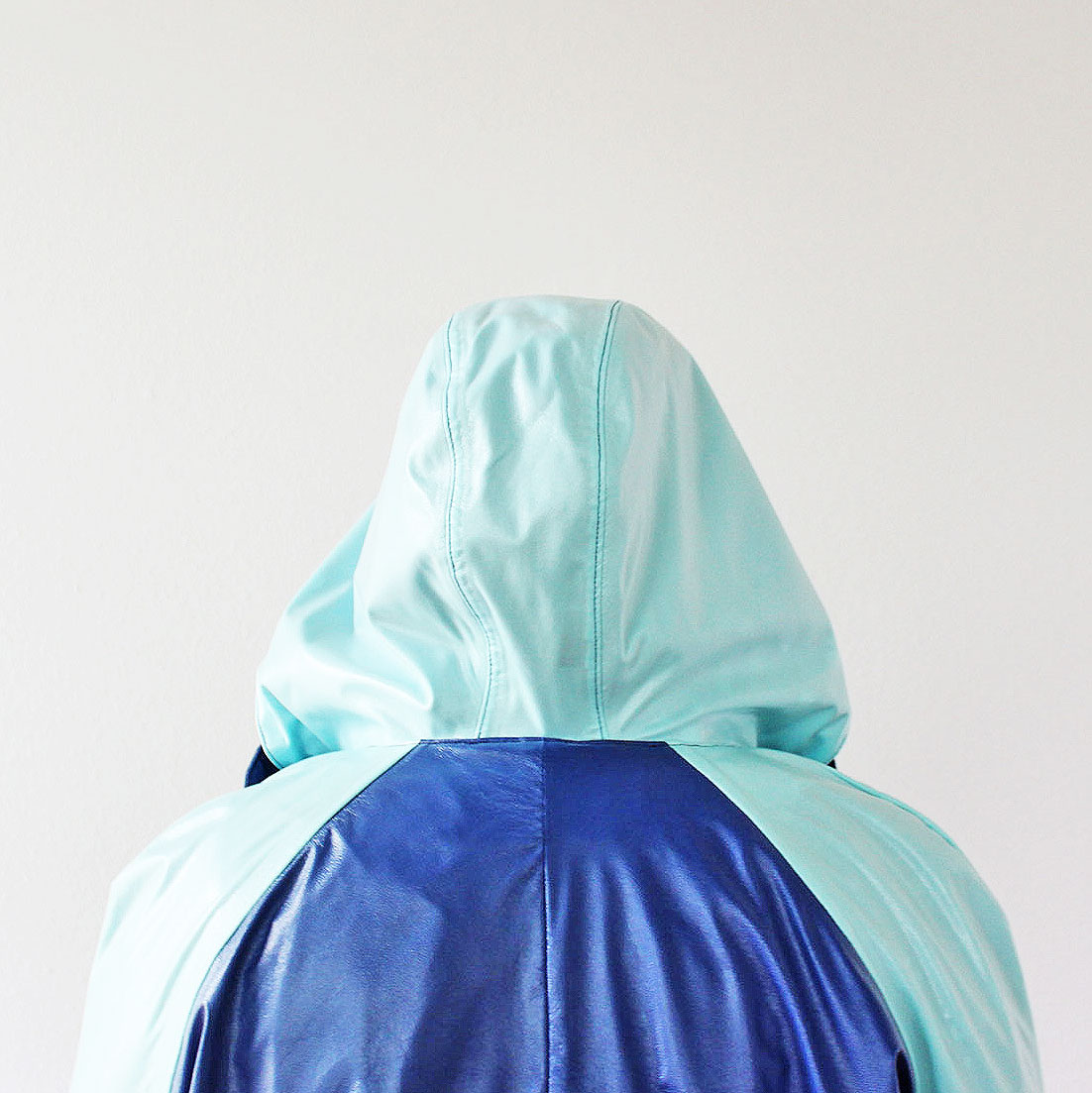I know the one thing we are all most nervous about making a raincoat is…. SOURCING FABRIC! Well I’m here to help. It turns out there are lots of great resources online for waterproof & water resistant fabrics. There is a notable caveat that these fabrics definitely do not come cheap, making your own raincoat is an investment of both time and money! But being able to dance in the rain, hood up, splashing in puddles in your very own raincoat that YOU MADE!!!??…. PRICELESS!
Supplies
First of all, when making a raincoat you are going to need a few specific supplies aside from what you may have in your standard sewing arsenal. Please note that most of the links here are affiliate links.
- A Teflon Foot – If you are using any kind of coated or laminate fabric, a Teflon presser foot is essential for ensuring you still get a good glide over your fabric when sewing with the right sides up. In a pinch, masking or washi tape can be placed on the under side of a basic presser foot. A roller foot may work here as well.
- A 24″ or 28″ separating zipper – Length needed will vary by size. See p. 8 of your instructions. I really love Zipper Shipper on etsy for all my zipper needs!
- 4 x 3/4″ Sew-in Snaps – You can also use set-in snaps here if you prefer, but you will probably need more than four to make the spacing look right with a smaller snap. The sew-in snaps are not visible from the outside of the raincoat.
- Zipper Foot – This is optional but highly recommended both for use in this pattern and in your sewing supply stash in general.
- Seam Sealer – There are two options I recommend. Either an iron-on tape sealer like this, or a gel sealer like this. I will be covering both later in the sewalong. See p. 9 in your instruction book for more details.
- Topstitch Thread – this is optional but I really love the way it looks for outerwear. Especially with the back pleat detail.
- Fusible Hem Tape – again optional depending on your fabric. We need to blind stitch our hems in place on the inside of the jacket. With some coated/laminated fabrics, it may be too difficult to pick up the threads as needed for a blind stitch. We remedy this by using hem tape in between the seamlines.

Fabrics
For the purpose of this sewalong, I will be focusing on waterproof and water resistant fabrics. You could totally make a fun all-weather jacket out of this pattern using a medium weight twill, wool, canvas, or even denim! But as being water resistant is the nature of a raincoat, and a slightly more tricky factor when it comes to sourcing fabrics that is where I want to be the most help.
Most importantly, you need to decide if you want to go for a fully waterproofed jacket or a water resistant jacket for lighter rain climates. For more info on the difference between water proof and water resistant see page 9 in the instruction book.
Many of the bigger named fabric companies will have a water proof/resistant/repellant section of their online or brick-and-mortar shops. This can be a good place to start to get an idea of what’s out there and if you want to do a little less digging. However, I’m always a fan of supporting small businesses (and I know many of you are too!) So I’ve complied a list of indie fabric and supply shops that either have a dedicated section to raincoat appropriate fabrics or are wholly dedicated to performance/weather wear fabrics.
Indie Shops:
- Stone Mountain & Daughter has a whole section of performance & swimwear fabrics many of which are water repellant (this link will take you straight there!) BONUS purchasers of the Whitney Raincoat will find a 15% off coupon in the fabric resources section of the instructions on p. 30!
- Seattle Fabrics is great because they specialize in outerwear & performance fabrics. You will also find a great selection of seam sealers and other water proofing supplies.
- Blackbird Fabrics can always be counted on for a great selection of waxed canvas. Especially in the fall!
- Laminated Cotton Fabric on Etsy is US based and has a great selection of laminated cotton – my favorite fabric for this pattern! Lots of fun prints available.
- Made in SSun on Etsy has a really gorgeous selection of waterproof fabrics of all types if you are willing to fork up the shipping from South Korea. This is where I got the terrazzo print fabric for my raincoat!
Big Box Stores with Designated Waterproof/Repellant Sections:
- Mood Fabrics is always my go-to when I want something special and haven’t been able to find it at an indie store.
- Fashion Fabrics Club has a rainwear specific section!
- Harts Fabric has a great mix of laminated cotton prints and more utilitarian solid-color fabrics.
Other Things to Keep in Mind
If you end up going with a lighter weight fabric like ripstop nylon or PUL coated knit you may want to interface or interline (cut pattern pieces in muslin as well and sew with outer fabric pieces as one) your fabric so the raincoat is able to maintain it’s swingy structure. Use your best judgement!
If your fabric has a coating on it, the coated side is the RIGHT SIDE (the side of the fabric you see when worn) of the fabric.
There is nothing special you need to do differently when cutting water proof or resistant fabrics. However, coated fabric may tend to slip against itself when folded right sides together for cutting. You may have an easier time cutting with the coated side facing out.

I hope you found all this information helpful and are ready to source fabrics for your raincoat project! Please feel free to comment below if you have any further questions surrounding fabric and materials for this pattern.
Happy Sewing!



Have you had any experience using something like the waxed oilcloth from merchant and mills? I’m wondering if this fabric would be to stiff for the swing coat feel? Such a great pattern!
I think a waxed oilcloth would be great! The swing shape will really stand out in a stiffer fabric 🙂